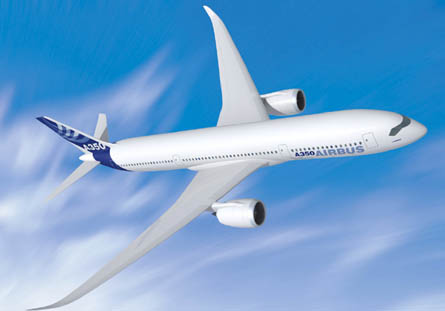Airbus will introduce a streamlined final assembly concept for the A350 to enable it to almost half the time it takes to build the aircraft compared with the A330/A340. The more efficient process will help the airframer ramp up output of the new twinjet to more than 140 aircraft a year by 2017.
"We're going to reduce the time from fuselage join-up to delivery from four months on the A330/A340 to 2.5 months on the A350," says Francois Caudron, vice-president A350 customer and business development. "We'll do that by starting cabin furnishing very early in the process, in parallel with final assembly."
 |
|---|
© Airbus |
The A330/A340 line in Toulouse has a sequential organisation with structural assembly of the fuselage and wing, and power-on being completed before the aircraft is moved to another station for interior installation and completion. The process for the A350, which will also be built at the French plant, will achieve power-on ahead of wing join-up, at which time cabin integration will begin in parallel with the remainder of the assembly process.
"We'll get all the major cabin monuments pre-positioned in the aircraft sections before they are joined," says Caudron.
Despite the change in process, the level of equipping of A350 subassemblies when they are delivered to the final assembly line will not change dramatically from that specified for the A380. For example, there is no plan to have the nose gear installed in the nose assembly before delivery. "We don't see any advantage in this," says Caudron.
A350 output is planned to ramp up from 18 aircraft in the first year of full production (2013) through 83 units after two years to 143 units by 2017. Airbus will use Beluga transports to transfer the completed fuselage sections to Toulouse from its St Nazaire and Hamburg plants, and the wing from Broughton via Bremen. Tail surfaces will come by air from the Stade and Getafe plants in Germany and Spain, respectively.
Source: Flight International
















